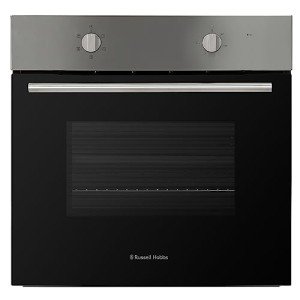The Rise of Built-In Ovens: A Seamless Approach to Modern Cooking
In contemporary kitchens, where style looks mix effortlessly with performance, one device sticks out as a true video game changer: the built-in oven. As property owners and chefs alike continue to seek innovative solutions that improve their cooking experience, built-in ovens have actually ended up being significantly popular. This short article explores the advantages, factors to consider, and patterns surrounding built-in ovens, highlighting why they are an essential function in modern-day cooking spaces.
What is a Built-In Oven?
A built-in oven is a kitchen home appliance developed to be integrated into the cabinets of a cooking area instead of standing alone. Unlike traditional freestanding ovens, which can be moved and placed anywhere, built-in ovens been available in numerous styles and sizes to fit specifically within designated areas. Available in single or double configurations, these ovens use a structured look that matches contemporary kitchen area designs.
Advantages of Built-In Ovens

1. Space-Saving Design
One of the most appealing benefits of built-in ovens is their space-saving style. By incorporating the oven into cabinets, you can free up important counter and flooring space. This is especially beneficial in smaller kitchen areas, where maximizing room is important. Built-in ovens can be installed at eye level, making them more available and lowering the requirement to bend down.
2. Aesthetic Appeal
Built-in ovens contribute to a streamlined and cohesive cooking area style. Readily available in different finishes-- such as stainless-steel, black, white, and custom-made cabinets-- they can mix flawlessly into the overall decor. This visual appeal enhances the kitchen area's visual harmony and elevates the area, creating a contemporary and advanced environment.
3. Boosted Functionality
Numerous built-in ovens come geared up with innovative cooking technologies, such as convection cooking, steam ovens, and wise functions. These enhancements allow for flexible cooking options, making it simpler to accomplish professional-level outcomes at home. Smart built-in ovens can even link to Wi-Fi, making it possible for users to control the oven remotely, receive notifications, and access a variety of cooking programs and recipes.
4. Enhanced Ventilation
Since built-in ovens can be integrated with kitchen area hoods and ventilation systems, they can assist keep much better air quality and minimize cooking smells. This is specifically significant for those who love to prepare with aromatic spices and components, as an effective ventilation system can keep the kitchen comfortable and welcoming.
5. Personalization Options
Built-in ovens provide a large range of personalization options to match specific cooking designs and requirements. From professional-grade devices with numerous cooking modes to compact styles for smaller sized cooking areas, homeowners can pick the oven that fits their particular requirements. Numerous producers also offer personalized front panels, enabling you to match the oven's appearance to your cabinets for a genuinely merged look.
Considerations When Choosing a Built-In Oven
While built-in ovens have many advantages, there are necessary considerations to remember before making a purchase:
1. Price
Built-in ovens normally feature a higher cost than their freestanding counterparts due to their style and setup requirements. It's important to element in both the cost of the oven and any additional costs associated with cabinets modifications or installation.
2. Installation Requirements
Setting up a built-in oven frequently needs expert help, specifically if you require to modify existing kitchen cabinetry. Make sure that you consider any expenses related to installation, including labor and possible cabinets changes.
3. Size and Dimensions
Before purchasing a built-in oven, determine the designated space precisely to ensure a proper fit. Built-in ovens come in various sizes and configurations, so picking one that aligns with your needs and kitchen area style is crucial.
4. Way of life and Usage
Consider your cooking habits and requires when picking a built-in oven. If Built in ovens electric , a double oven might be more helpful. On the other hand, if you have a compact cooking area, a single-wall oven might be enough.
Patterns in Built-In Ovens
The cooking area appliance market is continuously evolving, and built-in ovens are not exempt from emerging trends. Some present patterns consist of:
Smart Technology Integration: With the rise of clever home innovation, built-in ovens now often feature connection options. This allows users to keep track of cooking development and adjust settings by means of mobile apps.
Energy Efficiency: As sustainability becomes a top priority, lots of producers are investing in energy-efficient built-in ovens that reduce energy intake while maintaining efficiency.
Multi-functional Designs: Built-in ovens now use features such as air frying, slow cooking, and steaming, providing versatility that meets a vast array of cooking approaches.
Conclusion
Built-in ovens undoubtedly represent an ideal mix of style, function, and convenience in today's cooking areas. As more homeowners choose this modern service, the focus moves to creating a cooking area that is as visually pleasing as it is practical. Whether integrated hob and oven are developing a new home or remodeling your kitchen area, considering a built-in oven could raise your culinary experience and transform your kitchen area into a stylish and functional haven. With a variety of options readily available and ongoing developments in technology, built-in ovens remain a standout choice for both amateur cooks and cooking enthusiasts alike.
